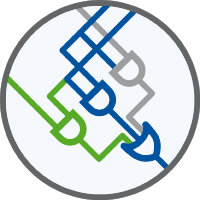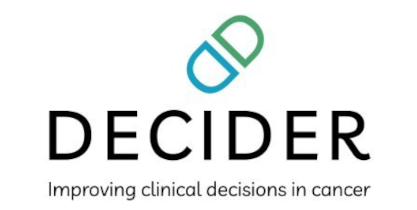⚠️ Disclaimer: This is an early preview of the CORNETO library. CORNETO is under active development and has not yet reached a stable release for end users. Contributions are not yet open until the first stable release. Please stay tuned for updates.
CORNETO (Constrained Optimization for the Recovery of Networks from Omics) is a unified framework for multi-sample joint network inference, implemented in Python. It tackles common network inference problems in biology and extends them to support multiple samples or conditions simultaneously, enhancing network identification. The framework reformulates these problems using constrained optimization and mathematical programming, allowing them to be optimally solved with mathematical solvers. Additionally, it provides flexible modeling capabilities, enabling the exploration of hypotheses, modification, or development of new network inference problems through the use of modular constrained building blocks.
We're currently working towards having a first, stable release for end-users with all the features described in the preprint. In the meantime, you can play with CORNETO using the latest dev. version.
To install the development version with support for the Gurobi solver and plotting capabilities using graphviz, please use conda or mamba to create an environment:
conda activate your-environment
conda install -c conda-forge python-graphviz scipy
pip install cvxpy-base gurobipy
Then, install the dev version of CORNETO:
git clone -b dev https://github.com/saezlab/corneto.git
cd corneto
pip install -e .
CORNETO supports many different mathematical solvers for optimization. However, for real world problems, we typically use GUROBI. GUROBI is a commercial solver which offers free academic licenses. If you have an academic email, this step is very easy to do in just few minutes. Follow these steps:
- Request the "Academic Named-User License" here: https://www.gurobi.com/features/academic-named-user-license/.
- Register the license in your machine with the
grbgetkeytool from GUROBI. For this, download the corresponding license tool for your system here: https://support.gurobi.com/hc/en-us/articles/360059842732-How-do-I-set-up-a-license-without-installing-the-full-Gurobi-package - Run the
grbgetkeytool and introduce your license key.
If you find any issue, please check this article: https://support.gurobi.com/hc/en-us/articles/13207658935185-How-do-I-retrieve-an-Academic-Named-User-license
Please note that other high performance solvers like CPLEX, COPT, Mosek, etc are also supported. Please check the solver's table from https://www.cvxpy.org/tutorial/solvers/index.html to see which solvers are supported by the CVXPY backend.
Alternatively, it is possible to use CORNETO with any free solver, such as HIGHS, included in Scipy. For this you don't need to install Gurobi. Please note that if gurobipy is installed but not registered with a valid license, CORNETO will choose it but the solver will fail due to license issues. If SCIPY is installed, when optimizing a problem, select SCIPY as the solver
# P is a corneto problem
P.solve(solver="SCIPY")A pre-release version of the lib, which is used by LIANA+ and NetworkCommons, is already available at Pypi and can be installed with pip install corneto. However, this version lacks many of the developments discussed in the preprint.
You can install it along with CVXPY, Scipy (for open source solver support) and Gurobipy for using GUROBI solver:
pip install corneto cvxpy-base scipy gurobipy@article {Rodriguez-Mier2024,
author = {Rodriguez-Mier, Pablo and Garrido-Rodriguez, Martin and Gabor, Attila and Saez-Rodriguez, Julio},
title = {Unified knowledge-driven network inference from omics data},
elocation-id = {2024.10.26.620390},
year = {2024},
doi = {10.1101/2024.10.26.620390},
publisher = {Cold Spring Harbor Laboratory},
URL = {https://www.biorxiv.org/content/early/2024/10/29/2024.10.26.620390},
eprint = {https://www.biorxiv.org/content/early/2024/10/29/2024.10.26.620390.full.pdf},
journal = {bioRxiv}
}
CORNETO is developed at the Institute for Computational Biomedicine (Heidelberg University). We acknowledge funding from the European Unions Horizon 2020 Programme under the grant agreement No 951773 (PerMedCoE https://permedcoe.eu/) and under grant agreement No 965193 (DECIDER https://www.deciderproject.eu/)




